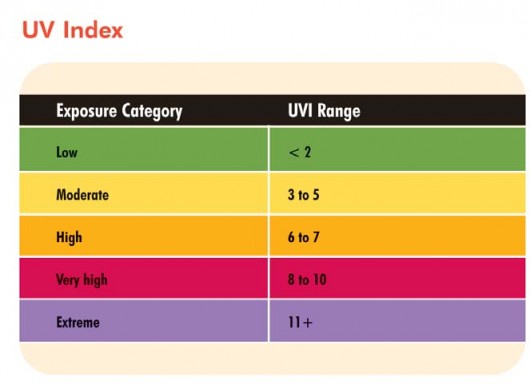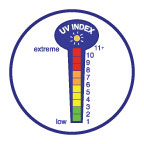NSU Newsroom
SharkBytes
Horizons
This version of NSU News has been archived as of February 28, 2019. To search through archived articles, visit nova.edu/search. To access the new version of NSU News, visit news.nova.edu.
This version of SharkBytes has been archived as of February 28, 2019. To search through archived articles, visit nova.edu/search. To access the new version of SharkBytes, visit sharkbytes.nova.edu.
Other NSU News Sources
News Releases Archive
Contact
Division of Public Relations and Marketing Communications
Nova Southeastern University
3301 College Avenue
Fort Lauderdale, Florida 33314-7796
SharkBytes Archives
SharkBytes Categories
- Academics
- Alvin Sherman Library
- Athletics
- Campaign Corner
- Community News
- Featured Center Stories
- News and Upcoming Events
- NSU Achievements
- NSU Alumni Spotlight
- NSU Art Museum Fort Lauderdale
- NSU Camps
- NSU Health Care Centers
- NSU Research Spotlight
- Nutrition Tips
- Looking Ahead
- Pride Bites
- Recreation and Wellness
- Regional Campuses
- Staying Green
- Student Affairs
- University School
Contact
Division of Public Relations and Marketing Communications
Nova Southeastern University
3301 College Avenue
Fort Lauderdale, Florida 33314-7796
Action Steps for Sun Safety – There’s plenty of Summer left – Protect yourself and your Children
Source: U.S. Environmental Protection Agency
Download the Action Steps (PDF) (2pp, 79KB, About PDF).
While some exposure to sunlight can be enjoyable, too much can be dangerous. Overexposure to ultraviolet (UV) radiation from the sun can result in a painful sunburn. It can also lead to more serious health problems, including skin cancer, premature aging of the skin, cataracts and other eye damage, and immune system suppression. Children are particularly at risk. This Web page explains simple steps to protect you and your children from overexposure to UV radiation.
Most people are not aware that skin cancer, while largely preventable, is the most common form of cancer in the United States. More than 3.5 million new cases of skin cancer are diagnosed annually. By following some simple steps, you can still enjoy your time in the sun and protect yourself from overexposure. The U.S. Environmental Protection Agency (EPA) recommends these action steps to help you and your family be “SunWise.”
Early detection of melanoma can save your life. A new or changing mole should be evaluated by a dermatologist.
Sunburns significantly increase one’s lifetime risk of developing skin cancer, especially for children.
 Avoid Sun Tanning and Tanning Beds
Avoid Sun Tanning and Tanning Beds
UV radiation from tanning beds and the sun causes skin cancer and wrinkling.
Generously apply about one ounce of sunscreen to cover all exposed skin 15 minutes before going outside. Sunscreen should have a Sun Protection Factor (SPF) of at least 15 and provide broad-spectrum protection from both ultraviolet A (UVA) and ultraviolet B (UVB) rays. Reapply every two hours, even on cloudy days, and after swimming or sweating.
Wear protective clothing, such as a long-sleeved shirt, pants, a wide-brimmed hat, and sunglasses, when possible.
Seek shade when possible, and remember that the sun’s UV rays are strongest between 10 a.m. and 4 p.m.
 Use Extra Caution Near Water, Snow and Sand
Use Extra Caution Near Water, Snow and Sand
Water, snow and sand reflect the damaging rays of the sun, which can increase your chance of sunburn.
The UV Index provides important information to help you plan your outdoor activities in ways that prevent sun overexposure. The UV Index forecast is issued daily by the National Weather Service and EPA. The UV Index forecasts the strength of the sun’s harmful rays. The higher the number, the greater the chance of sun damage. Visit www.epa.gov/sunwise/uvindex.html.
Get Vitamin D safely through a diet that includes vitamin supplements and foods fortified with Vitamin D. Don’t seek the sun.
Special Considerations for Children
Recent medical research shows that it is important to protect children and young adults from overexposure to UV radiation. For babies under 6 months, the American Academy of Pediatrics recommends
- avoiding sun exposure, and
- dressing infants in lightweight long pants, long-sleeved shirts, and brimmed hats.
Parents can also apply sunscreen (SPF 15+) to small areas like the face and back of the hands if protective clothing and shade are not available.
EPA’s SunWise Program
In response to the serious public health threat posed by overexposure to UV radiation, EPA is working with schools and communities across the nation through the SunWise Program. SunWise is an environmental and health education program that teaches children how to protect themselves from overexposure to the sun.





